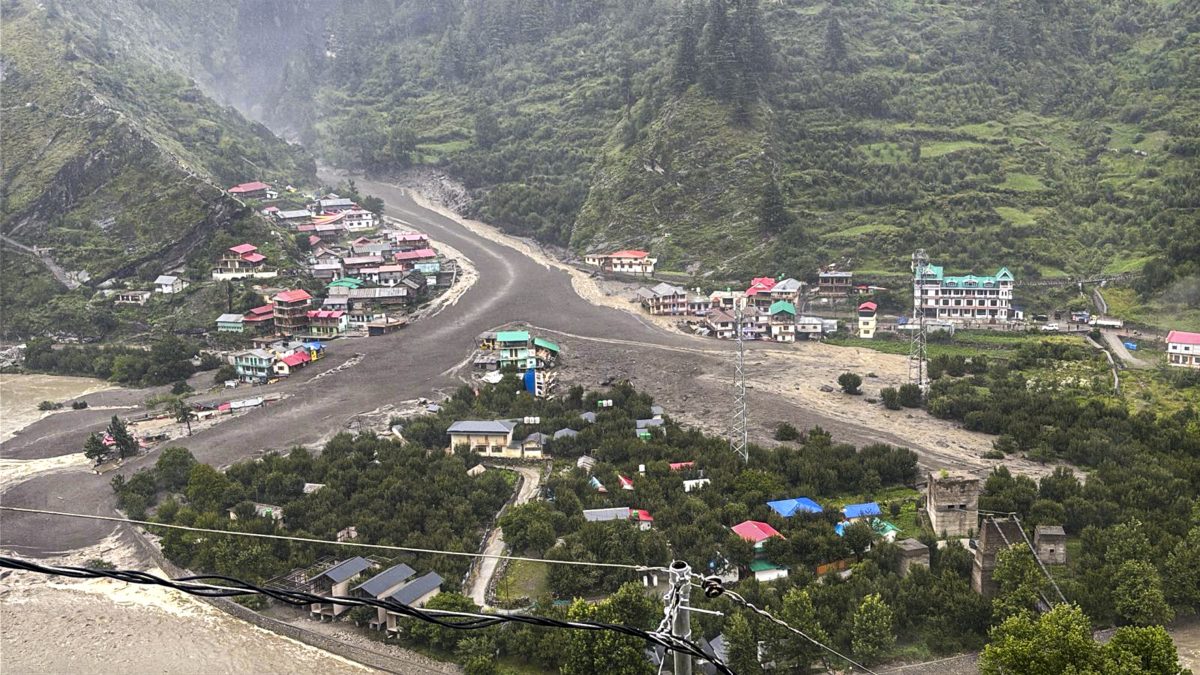Wild Spirit, which art moving everywhere;
Destroyer and Preserver; hear, oh hear!
— Percy Bysshe Shelley
Nature, in its sublime and untamed force, has long been both a giver and taker of life. For the Indian Army, posted across some of the world’s most hostile terrains — from the glacial heights of Siachen to the rain-lashed slopes of the Northeast — this duality is a lived reality.
Soldiers who train for battle often find themselves at the mercy of landslides, avalanches and floods. These forces, invisible and indiscriminate, have quietly claimed hundreds of lives, making nature not just a backdrop to service — but among the army’s most formidable and unforgiving foes.
This harsh truth came into sharp focus once again during the recent landslide in Harshil, Uttarakhand. There are prayers on their lips, hopes in their hearts, and a determined race against time to rescue their brothers-in-arms still missing after the Harshil landslide in Uttarakhand on Tuesday.
Of the 11 missing army personnel, two have been rescued, while nine remain untraced. Unfortunately, this is not the first time the army — both in terms of men and material — has suffered losses due to natural calamities.
Flash floods in Uttarakhand
On August 5, a sudden extreme weather event, likely caused by glacial burst or lake breach, triggered flash floods in the Harsil area of Uttarkashi, Uttarakhand, where an army transit camp was stationed. The cloudburst led to the disappearance of at least eight to ten soldiers initially, and helicopters were put on standby for immediate rescue operations.
The region, already prone to landslides and river surges during the monsoon season, posed additional challenges for search teams. This disaster came amid a broader red alert issued by the India Meteorological Department (IMD) for the state due to continued heavy rainfall.
Historically, Uttarakhand has witnessed similar natural calamities affecting military deployments. During the 2013 Kedarnath floods, the Indian Army launched Operation Surya Hope, risking their lives to rescue thousands of stranded pilgrims. Personnel were injured and killed during the rescue missions due to flooding, rockslides and helicopter crashes, though official army casualties from that operation were not always made public.
Impact Shorts
More ShortsAvalanches in high-altitude army zones
The Indian Army regularly operates in extreme terrains like the Siachen Glacier and the Kashmir Valley, making soldiers vulnerable to avalanches. In February 2016, a tragic avalanche struck an army post in the northern Siachen Glacier at an altitude of nearly 20,000 feet.
Ten soldiers, including Lance Naik Hanumanthappa Koppad, were buried under snow. Though Koppad was miraculously rescued after six days, he later succumbed to organ failure.
Between 1984 and December 2015, approximately 869 Indian Army personnel—33 officers, 54 junior commissioned officers and 782 other ranks — died on the Siachen Glacier due to weather-related causes. By early 2016, that number had risen to at least 883, following the February 2016 avalanche.
Avalanches in Siachen and adjacent sectors like Sonmarg, Gurez and Kupwara have occurred regularly, with notable events in January 2017 when 20 soldiers and 4 civilians were killed after a series of avalanches hit army posts in the Gurez and Bandipora sectors of Jammu and Kashmir.
In an interaction with a team of Tiranga Mountain Rescue in April 2022, Defence Minister Rajnath Singh confirmed that an average of 20 to 25 Indian Army personnel lose their lives every year due to avalanches.
Government data shared with Parliament show that between 2016 and 2018, avalanches claimed 74 army lives: 18 in 2016, 30 in 2017 and six in 2018. In Arunachal Pradesh, seven soldiers died in a February 2022 avalanche while on patrol in a snowbound area.
These numbers have prompted the introduction of early warning systems, snow radars and high-altitude survival training, yet the harsh conditions continue to make high-altitude deployments deadly.
Landslides and terrain-triggered disasters
Landslides have also taken a heavy toll on the Indian Army, especially in the monsoon-prone states of the Northeast and the Himalayan belt. A particularly devastating incident occurred on June 30, 2022, when a massive landslide near a railway project in Noney district, Manipur, struck a Territorial Army camp.
The soldiers were deployed to safeguard the under-construction railway line. The disaster killed 58 people, including 29 army personnel. This remains one of the worst peacetime natural disasters to affect the Indian Army in recent memory.
More recently, on June 1 this year, a landslide hit an Indian Army camp near Chatten in North Sikkim after days of torrential rainfall. Three personnel were confirmed dead, and six others, including officers and family members, remained missing.
The missing included Lt Col P Sandhu, his retired Air Force officer wife and their child named Amaira. Rescue operations were hindered by unstable terrain and poor visibility highlighting the perils faced by units even outside combat zones.
Impact, preparedness and the human cost
These repeated disasters is a telling tale on the dual battle Indian soldiers face: not just with external threats but with the forces of nature. The Indian Army frequently operates in fragile ecosystems, where weather can turn fatal in minutes. Despite technological advancements in forecasting and increased use of avalanche-detection systems and drones, natural calamities remain a constant hazard.
It is estimated that around two soldiers perish every month on Siachen alone due to weather conditions, based on long-term disclosures in the Lok Sabha. Defence reports and ministerial data confirm that in addition to the hundreds of soldiers who have died in combat, scores more are lost each decade to snowstorms, landslides and floods.
The government and army continue to invest in infrastructure and weather monitoring, but these disasters serve as sobering reminders of the immense physical and environmental challenges of defending India’s borders.


)

)
)
)
)
)
)
)
)



